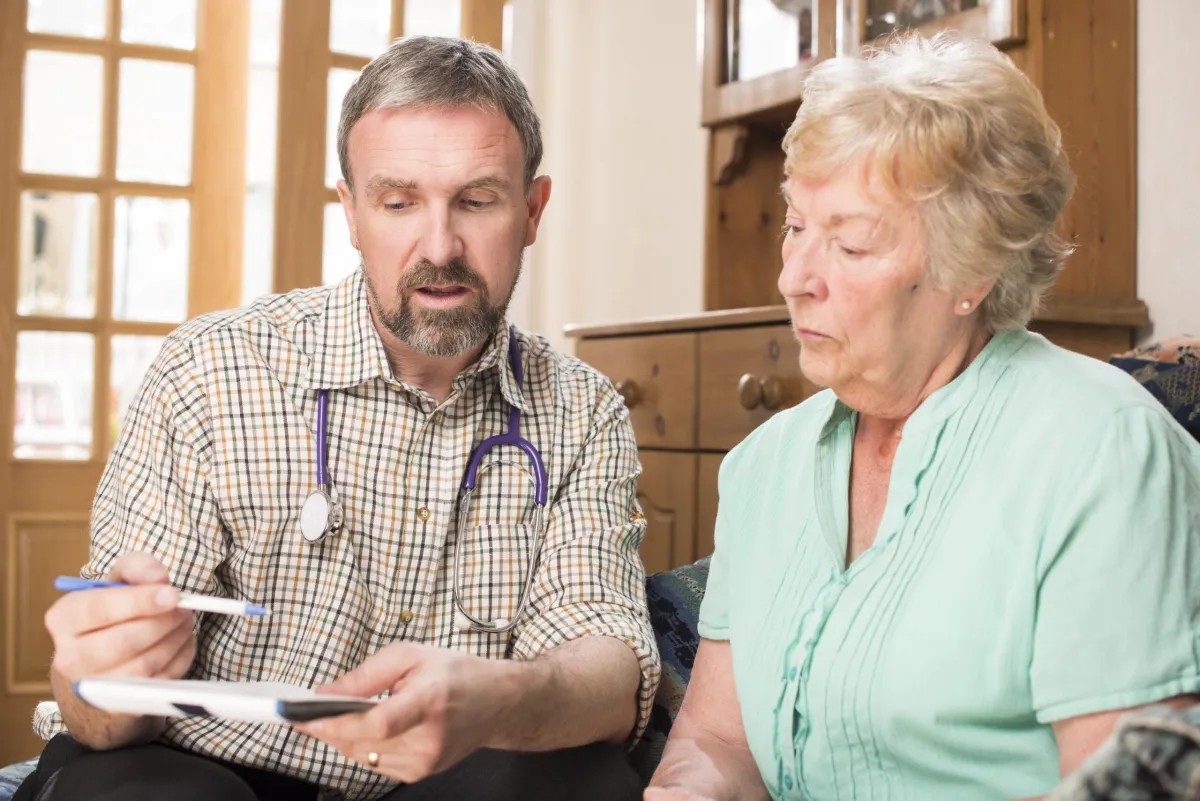
HOSPICE ADMISSION PROCESS
At Unified Care Hospice, we strongly believe the patient and family are an integral member of our team. Our staff will support and guide you. The patient and family will be involved in every decision that we make as a team. Our hospice services are built around a family-centered approach to care.

ENROLLMENT PROCESS

We must first receive an order from the patient’s doctor.
If the doctor has recently seen the patient, it’s as simple as having the doctor fax an order to us that states Hospice Evaluation and Admit along with supporting documentation by an MD, multiple MD’s, hospital, etc. that would qualify a patient for Hospice (Certification of Terminal Illness of 6 month or less).
Home MD’s will not see patients for Hospice Assessments. A Nurse can assess a patient for Hospice without an order BUT there must be an established MD willing to write Hospice order and substantiate the Hospice diagnosis (MD office notes, hospital records).
A patient or caregiver can sometimes put in a ‘self-referral’ but will mostly depend on each individual’s situation.
Once the order has been submitted
An RN (Registered Nurse) will look over the patient’s medical history. Upon visiting the patient in home to make an assessment, the nurse will create a care program for the patient.


The care program schedule will vary per patient.
Because of this, we can never give visiting frequencies for any of our clinicians as it is misleading to patients and their families. Some of the personnel that may visit the patient include:
CNAs (Certified Nursing Assistants) as per the Care Plan created by the Nurse.
The Registered Nurse will visit to assess the patient’s care needs, make adjustments and recommendations needed.
Social Workers and Chaplain are also a part of the Care Team.
See Our Blogs

Massage Techniques in Hospice Care: Providing Comfort and Relief
Introduction: The Role of Massage in Hospice Care
In the sensitive realm of hospice care, massage therapy has emerged as a key component in providing comfort and relief to patients facing end-of-life challenges. This article delves into the various massage techniques tailored for hospice settings, highlighting their benefits and the care taken to adapt them to the needs of hospice patients.

Understanding the Basics of Hospice Massage
Defining Hospice Massage: Hospice massage is a gentle, non-invasive form of therapy designed to provide comfort, relieve stress, and improve the quality of life for those in hospice care.
Goals of Hospice Massage: The primary goal is to offer physical and emotional relief, help in managing symptoms, and provide a sense of peace and wellbeing.
Key Massage Techniques Used in Hospice Care
Swedish Massage: This technique uses gentle strokes and kneading to promote relaxation and improve circulation. It is often modified to suit the delicate condition of hospice patients.
Aromatherapy Massage: Incorporating essential oils can enhance the therapeutic effects of massage, providing additional relief from anxiety and pain.
Reflexology: Focusing on pressure points in the feet, hands, and ears, reflexology can stimulate energy flow and provide relief from symptoms.
Tailoring Techniques to Individual Needs
Assessing Patient Condition: Each patient's physical and emotional state is assessed to determine the most appropriate massage techniques.
Modifying Pressure and Approach: Massage therapists skilled in hospice care adjust their pressure and techniques to accommodate the patient's medical condition and comfort level.
Integrating with Medical Care: Hospice massage is often coordinated with the patient's medical care plan to ensure safety and maximize benefits.
Benefits of Massage in Hospice Care
Pain Relief: Massage can significantly reduce pain, which is a common concern for hospice patients.
Reducing Anxiety and Depression: The soothing effect of massage can alleviate feelings of anxiety and depression that often accompany end-of-life stages.
Improving Sleep Quality: By promoting relaxation, massage can help improve sleep quality, which is crucial for patient comfort.
Training and Sensitivity of Hospice Massage Therapists
Specialized Training: Therapists working in hospice care undergo specialized training to understand the unique needs of hospice patients.
Empathy and Compassion: Beyond technical skills, a deep sense of empathy and compassion is essential for providing effective hospice massage.
Challenges and Considerations
Navigating Physical Limitations: Adjusting techniques to accommodate the physical limitations and medical conditions of patients is a critical consideration.
Emotional Impact: Massage therapists must be prepared to handle the emotional aspects of working with terminally ill patients and their families.
Conclusion: Embracing the Healing Touch in Hospice Care
In conclusion, massage therapy in hospice care plays a vital role in enhancing the quality of life for terminally ill patients. Through a variety of adapted techniques, skilled therapists provide much-needed relief, comfort, and emotional support. As an integral part of holistic hospice care, massage therapy stands out as a compassionate and effective approach to easing the journey through end-of-life care.

Interested In Care For Yourself Or A Loved One? Give Us A Call Today To Learn More.
© 2022 Unified Care Hospice - All Rights Reserved
info@ucarehospice.com
702-982-8266
